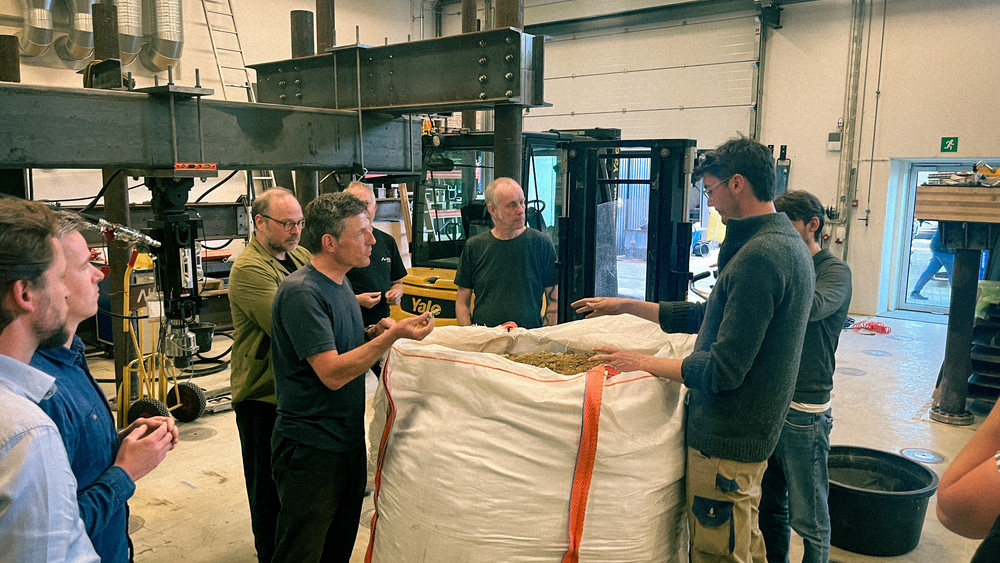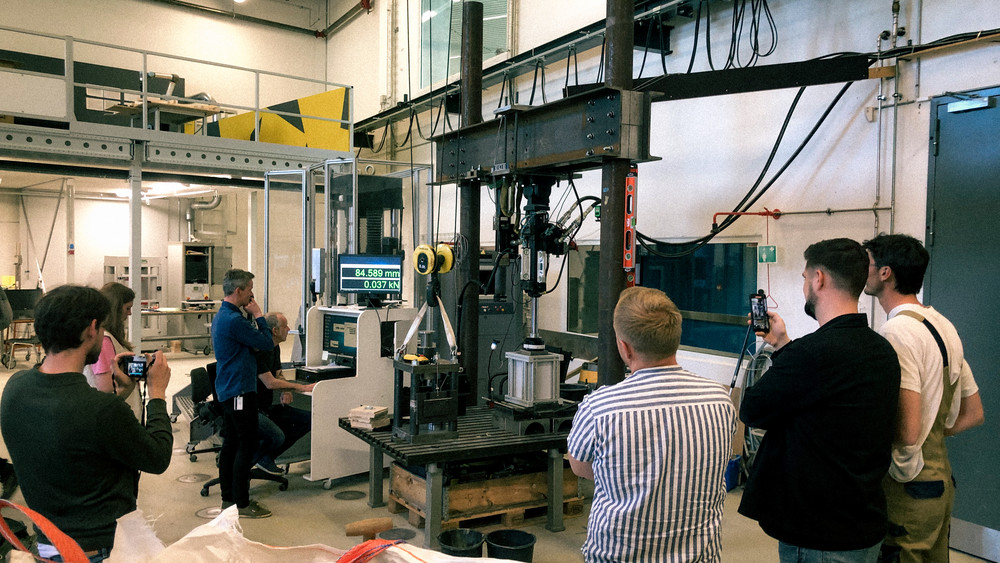INTERVIEW: CAN CLAY REPLACE CONCRETE IN CONSTRUCTION?
Christian Hanak and Trine Sofie Dusine Schmidt Nielsen from Juul Frost Architects are on a mission. In the Clay Alliance, they are working to find a sustainable alternative to concrete. Rammed earth might be the way forward. Here, they reflect on an eventful year that has made them richer with countless experiences.
Trine and Christian, clay plays a significant role in your daily lives, but can you tell us if clay can be used for anything other than Christmas decorations?
Christian Hanak (CH): Clay can be used to build healthy houses. We are part of a group of enthusiasts behind the Clay Alliance, which, in short, is about using clay as a substitute for some of the concrete used in future constructions.
Trine Nielsen (TN): The goal is to demonstrate the potential of rammed earth as a climate-friendly, load-bearing building material.
But clay in houses. Isn't that a bit old-fashioned?
CH: Yes, but it's not always a bad thing to be inspired by the past. About one-third of the world's population lives in houses made of unbaked clay. The secret is how we can use knowledge from the past to create a product that is durable in the future.
TN: Yes, and we have received help from a company that develops construction robots. So, it's not entirely old-fashioned.
How did the idea come about?
CH: As mentioned, the technique has been used before, but I became aware of it in Austria about 20 years ago when I visited a cemetery surrounded by a wall of unbaked rammed earth. We were there to get inspired by the use of new wooden structures and CLT, but I ended up coming home with my head full of inspiration and good examples.
TN: It’s quite telling of the process. We search for one thing but discover something else. It’s really learning by doing, and it should be no secret that it is not easy. Over eight months, we have learned an incredible amount about product development.
But aren't you architects? This sounds very entrepreneurial.
TN: Yes, in many ways, it’s a new world. Normally, as architects, we are not involved in developing an entirely new product. There are many calculations and even more tests.
CH: It is extremely important that we get verified results that we can use directly in our projects. We want to prove that the functionality can match concrete and, in some aspects, is actually better. And here, we will make mistakes to learn and fit in. It’s the only way we can continually optimize.
How do people react when you talk about clay as a building material?
TN: A classic concern is with water. We are getting more rain showers and more floods. Can we handle building with clay?
CH: And dust. Doesn’t it create terrible dust?
What do you answer then?
CH: That we have also built with unbaked clay in Denmark before, until cheap concrete pushed the material into oblivion. Many of these buildings are still in good condition today. We must counter many prejudices and revive the material here at home. This includes rediscovering our constructive, architectural ways to protect our structures.
But to cut to the chase. Is this a replacement for concrete?
CH: We are not naive, but we have set the bar high, and we are working towards building a four-story structure. We believe it can be done. But we think the implementation in the future will be with hybrid solutions, where we replace concrete with clay in some parts of the construction.
TN: It’s also about a new mindset for builders. Like everything else in the green transition, we need to practice. A meat-free Monday is manageable for many. And who knows, maybe there will also be a meat-free Tuesday, Wednesday, and Thursday.
Finally, why should I build my future house out of clay?
TN: What would you rather wear for a longer period of time; a raincoat or a wool sweater?
A wool sweater?
TN: Yes, because you can breathe in a wool sweater, it’s quality, and it adjusts your body temperature because it’s a breathable material. A raincoat makes it harder for your body to breathe and traps moisture inside, for example.
I assume the wool sweater is the clay?
CH: Exactly. The example may be a bit far-fetched. But it’s an excellent image of how clay houses are healthy. It simply makes your indoor climate better. And since we spend 80% of our time indoors, it positively impacts your health.

